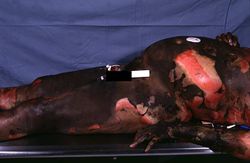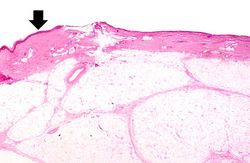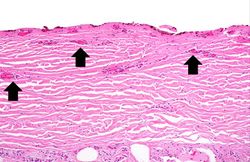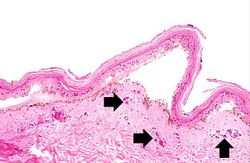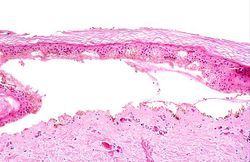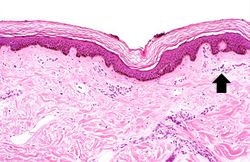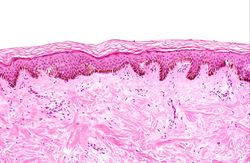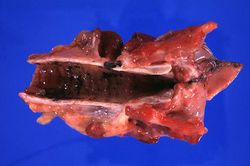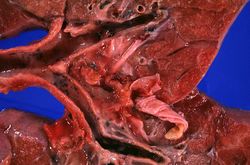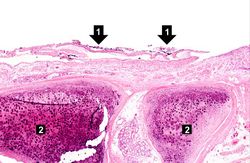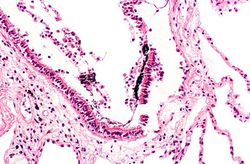Difference between revisions of "IPLab:Lab 12:Burns"
Seung Park (talk | contribs) (→Reference) |
Seung Park (talk | contribs) (→Journal Articles) |
||
| Line 35: | Line 35: | ||
=== Journal Articles === | === Journal Articles === | ||
| − | + | * Fukuzuka K, Rosenberg JJ, Gaines GC, Edwards CK 3rd, Clare-Salzler M, MacKay SL, Moldawer LL, Copeland EM 3rd, Mozingo DW. [http://www.ncbi.nlm.nih.gov/pubmed/10363899 Caspase-3-dependent organ apoptosis early after burn injury]. ''Ann Surg'' 1999 Jun;229(6):851-8; discussion 858-9. | |
=== Images === | === Images === | ||
Revision as of 15:18, 26 August 2013
Contents
Clinical Summary[edit]
This 45-year-old back female was involved in a house fire which killed her husband. Upon admission to a local emergency room she was found to have approximately 80% body surface area burns including 1st, 2nd, and 3rd degree burns. Burns were most severe around the head and neck. The patient was intubated and transferred to a tertiary care center. Upon arrival, the patient had a blood pressure of 71/25 mmHg, a heart rate of 121, and was responsive to deep pain but had few spontaneous movements. Both eyes were swollen shut, her nasal hairs were singed, and carbonaceous deposits were present in her nares, throat, and posterior pharynx. Despite aggressive fluid resuscitation and ventilatory support, she remained hypotensive, and became progressively hypoxemic and hypercapnic until she died approximately eight hours after the fire.
Autopsy Findings[edit]
The degree and severity of body surface burns were documented. Carbonaceous material was noted in the throat and posterior pharynx as well as in the trachea and main stem bronchi. The liver was soft, yellow and greasy. Results of premortem blood work showed a blood alcohol level of 147 mg/dL.
Images[edit]
Study Questions[edit]
Additional Resources[edit]
Reference[edit]
- eMedicine Medical Library: Thermal Burns
- eMedicine Medical Library: Emergent Management of Thermal Burns
- Merck Manual: Burns
Journal Articles[edit]
- Fukuzuka K, Rosenberg JJ, Gaines GC, Edwards CK 3rd, Clare-Salzler M, MacKay SL, Moldawer LL, Copeland EM 3rd, Mozingo DW. Caspase-3-dependent organ apoptosis early after burn injury. Ann Surg 1999 Jun;229(6):851-8; discussion 858-9.
Images[edit]
Related IPLab Cases[edit]
| |||||
A blood alcohol level over 100 mg/dL is considered legally drunk.
In alcoholics, aspiration pneumonia is common--bacteria enter the lung via aspiration of gastric contents.
